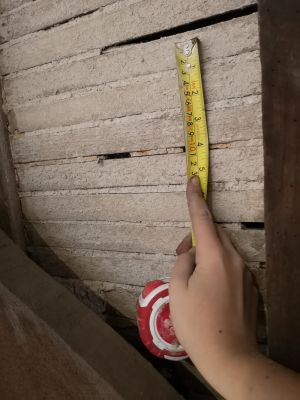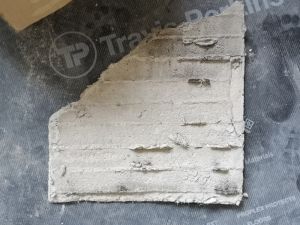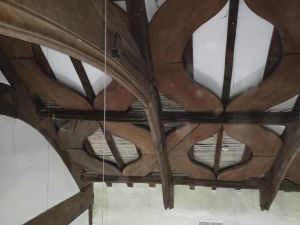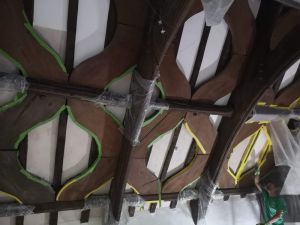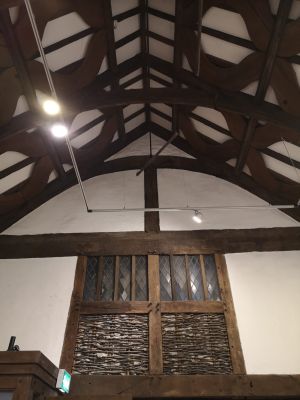Senedd-dy
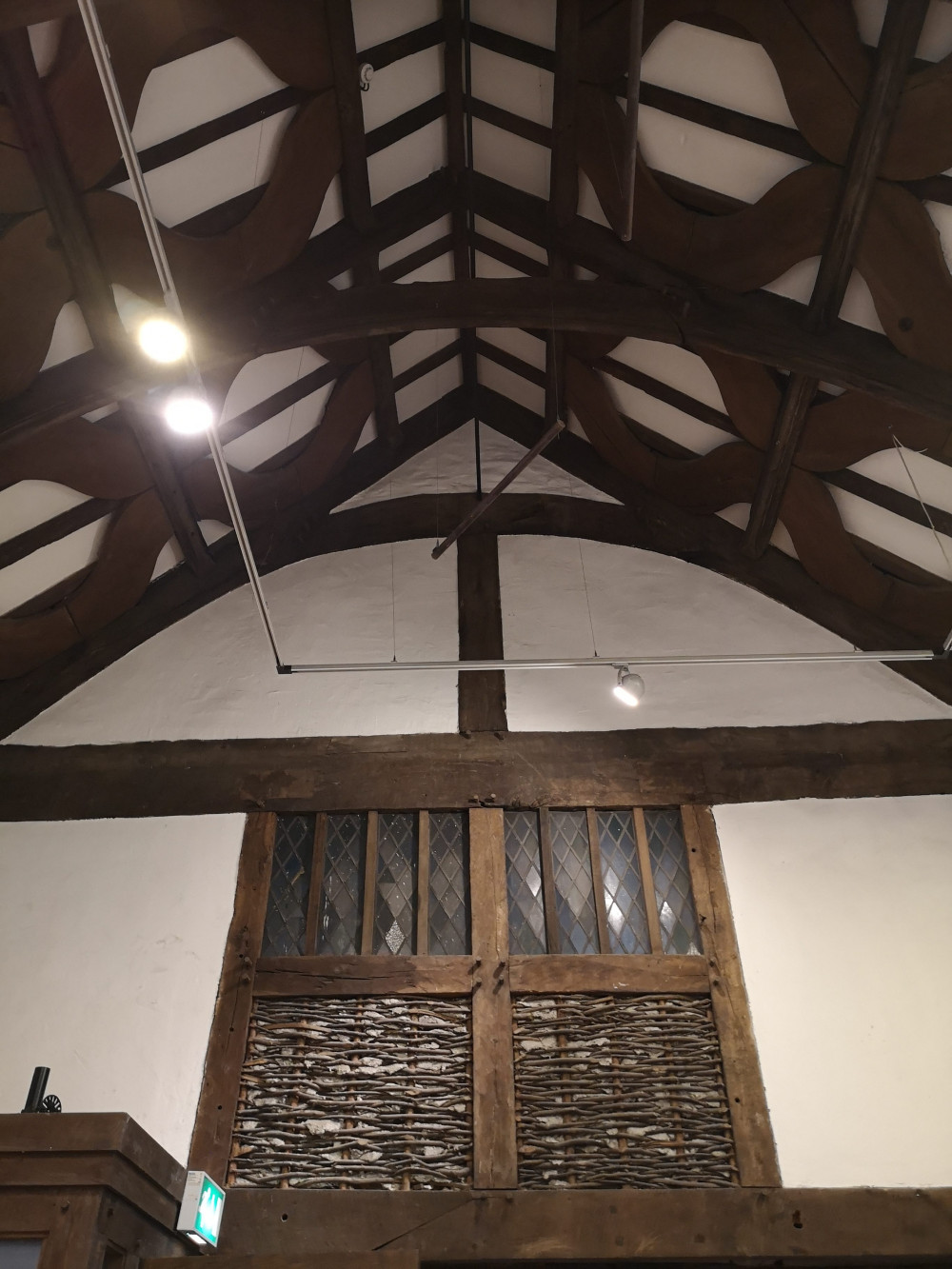
Owain Glyndwr’s historic parliamentary building in Machynlleth was first built in the 15th century and has had a number of uses over the years before being restored to highlight its historic style and beautiful timber frame. It became apparent that the lath and plaster ceiling needed inspecting after a couple of plaster panels departed from the lath work and fell to the floor.
The key reasons for failure in lath and plaster ceilings are water damage, cramped lath and lack of hair. After a push test of each panel in the ceiling, loose panels became apparent and removed. Broken laths were replaced, and poorly spaced laths were thinned down to increase the gap between. The spaces between laths on this system of ceiling is as important as the laths themselves. The lime which builds up by more than an inch cannot cling to a wooden surface upside down for very long, instead, it requires a real key for the lime to feed into. These ceilings function very well and have remarkable flexibility, and fire resistant properties as result of separation between laths. The spacing should allow the tip of your finger to poke through, this allows sufficient room for the lime plaster to push through and for nibs and lubs which fold over behind the lath and cling on from behind. The wider the space the more material makes its way behind and the stronger the connection to the face of the ceiling. The other important aspect to the plaster is the addition of hair which also strengthens the lime plaster and its connection to itself either side of the lath. Historic ceilings were so densely haired that, if they delaminate from the background, they can drape like a rug suspended from the ceiling at the remaining secure spots. If the ceiling is of note it is common practice to conserve it by screwing it back into place with stainless steel penny washers and plastering over the holes. The original plaster in the Senedd-dy had been replaced in previous restoration works, possibly multiple times, and it was the wooden braces which were the special feature of the ceiling so conserving the existing plaster was not prioritised. The strength of wood should be considered when lathing a ceiling, hard woods such as sweet chestnut or oak should be used and riven is widely considered to be best, the increased texture helps the lime to cling to the surface, splitting along the grain also makes the lath much stronger than sawn.
